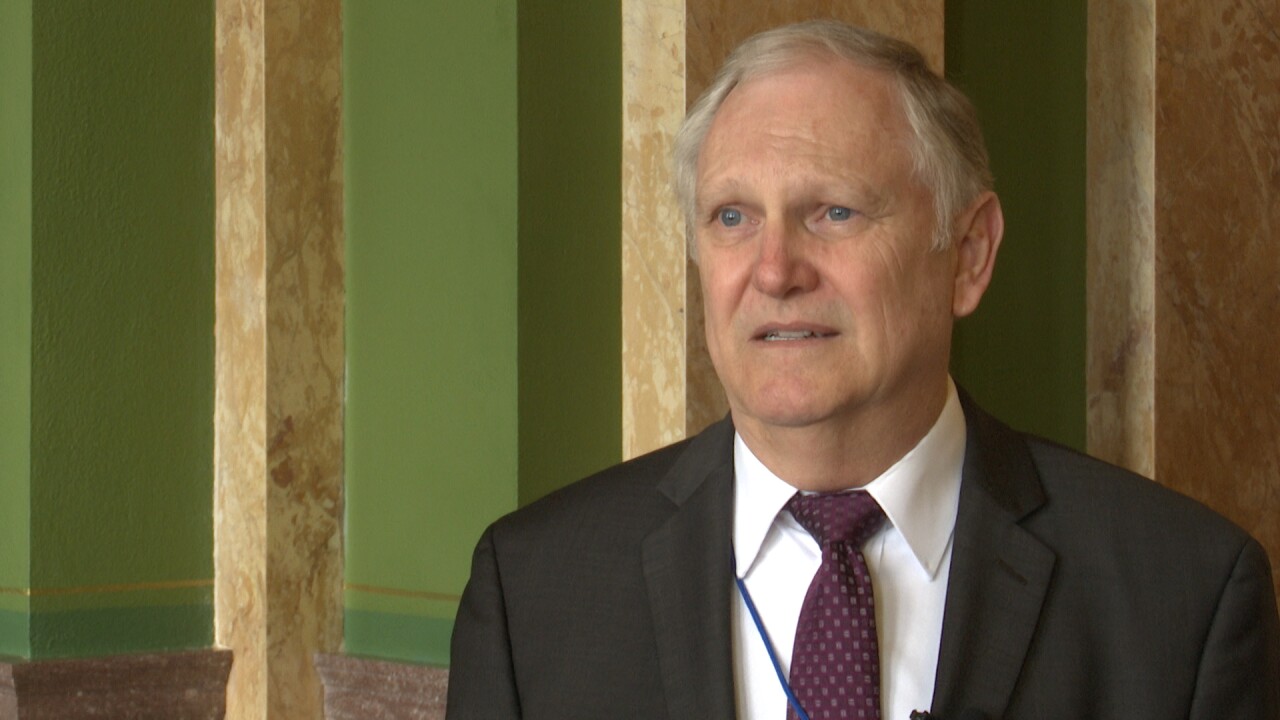Editor’s note: This is the first of a three-part series on federal Covid-relief funds in Montana – which will top $7 billion.
While the 2021 Montana Legislature has left town, one of its biggest projects is just getting under way: The distribution of more than $1.6 billion of federal Covid-relief funds, from the American Rescue Plan.
Gov. Greg Gianforte and a quartet of advisory commissions, created by the Legislature, will decide how to spend the money on everything from health care to high-speed Internet expansion.
“Not only are we going to address some of the health-care concerns of Montanans, but also we will use this money for long-term benefit to help the people of the state and our state economy,” says Mike Foster, head of the state’s American Rescue Plan Act (ARPA) program. “It’s a great opportunity to do that, rather than just looking for some short-term fixes.”

The commissions, composed of state lawmakers and members of Gianforte’s cabinet or staff, start meeting this week, to map out how each will recommend where to spend the money in four areas:
Infrastructure: Almost $600 million is allocated here, including at least $400 million for water-and-sewer projects in local cities, towns, counties and irrigation districts.
High-speed Internet expansion: This pot of money is $275 million – with the possibility to leverage much more, to expand broadband access into areas of Montana without it, or with service that’s not up to today’s speed standards.
Economic transformation, stabilization and workforce development: $150 million for this wide-ranging category – and, another $200 million in housing assistance, which the commission may play a role in helping design.
Health care and human services: About $380 million is available here, to help finance more than a dozen specific programs in this area, including vaccines, contact tracing, mental health and child care.
Federal guidelines will dictate some of the spending, but the state has broad discretion to decide most of the infrastructure and broadband money and portions of the other categories.
The commissions will solicit and review applications for projects and make recommendations to Gov. Gianforte, who makes the final call – although he must provide detailed reasoning if he rejects a panel recommendation.
Foster told MTN News that some of the projects may be years in the future, but the administration wants to decide on the money soon, especially for programs meant to help the economy recover from the Covid-19 pandemic.
“Our approach is going to be as quickly as possible that we can get this money out to Montana,” he said. “But at the same time, we have to be very deliberate in making sure we do stay within the parameters that the feds have lined out for us.”
Applications for competitive water-and-sewer projects are due July 15, and the administration has unveiled a website, www.arpa.mt.gov, where entities can submit applications and track the process.

House Minority Leader Kim Abbott, D-Helena, is a member of the Economic Transformation and Stabilization and Workforce Development Advisory Commission.
She says Democrats weren’t wild about creating another level of bureaucracy – the commissions – to review the spending, before the money gets distributed.
But she says it should be a good chance to vet ideas and hear from experts on the best way to spend the money. Democrats also are on board with the goal of making investments for long-term benefits to the state’s economy and workforce, she adds.
Abbott says she hopes her commission decides to “take a hard look” at how to improve access to child care in Montana.
“I think it’s one of the biggest barriers to people getting back into the workforce,” she says. “If people don’t have access to consistent child care, they can’t be in the workforce.”

Tim Burton, executive director of the Montana League of Cities and Towns, says the money for sewer-and-water projects is a once-in-a-generation infusion of cash to pay for badly needed improvements to these systems all across the state.
The federal government used to be a much bigger partner in infrastructure spending, and ARPA is a welcome change, he says.
“There’s a huge backlog of projects,” Burton says. “This money will be put to good use to upgrade clean-water systems throughout the entire state.”
U.S. Sen. Jon Tester, D-Mont. – the only member of Montana’s congressional delegation who voted for ARPA – told MTN News he’ll also be keeping a close eye on the process, with the hope that the money can get to where it can help quickly.
“I think the challenge you have with the commissions is coming up with a consensus on where these monies are going to go,” he said Tuesday. “In the previous administration, the governor made the call – I thought he spent the money pretty wisely.
“I think the commissions can do just as good a job. The proof will be in the pudding.”
Next: What happened to previous federal Covid-19 relief funds for Montana, especially those for businesses?




